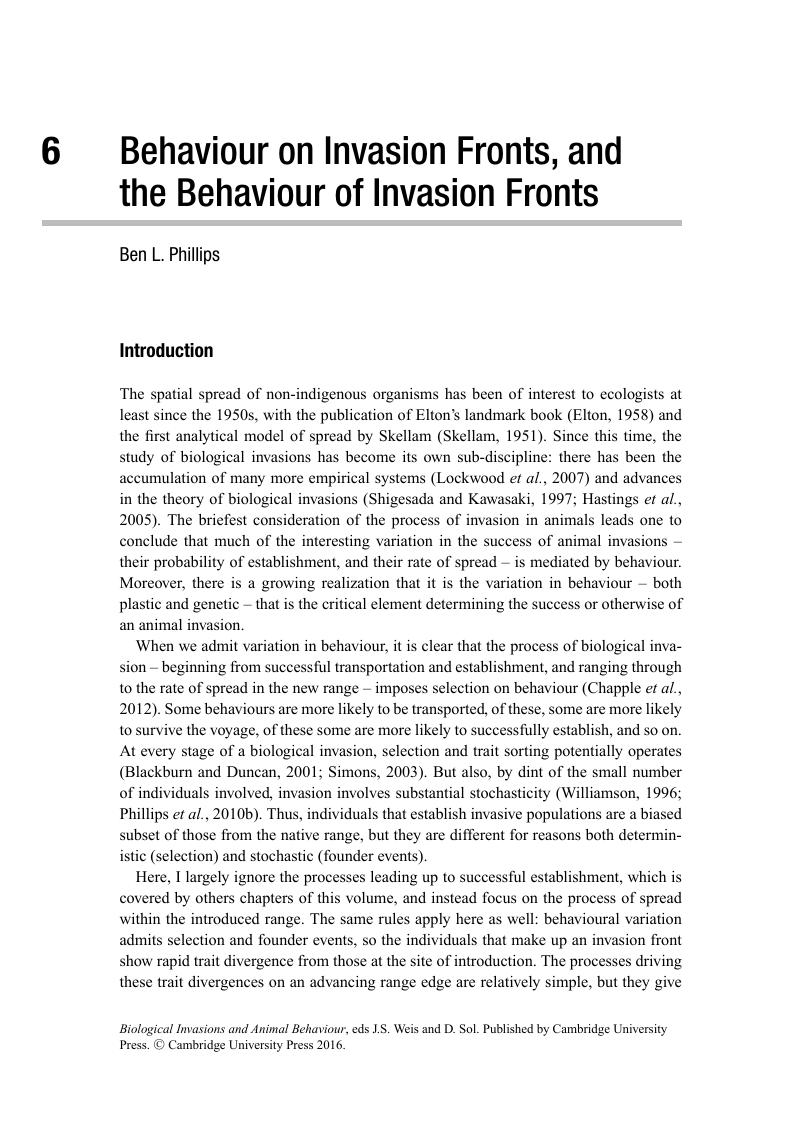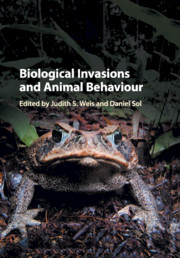Book contents
- Biological Invasions and Animal Behaviour
- Biological Invasions and Animal Behaviour
- Copyright page
- Contents
- Preface
- Contributors
- 1 Introduction
- Part I Behaviour and the Invasion Process
- 2 The Role of Behavioural Variation across Different Stages of the Introduction Process
- 3 Invading New Environments: A Mechanistic Framework Linking Motor Diversity and Cognition to Establishment Success
- 4 Invader Endocrinology: The Regulation of Behaviour in Pesky Phenotypes
- 5 Life History, Behaviour and Invasion Success
- 6 Behaviour on Invasion Fronts, and the Behaviour of Invasion Fronts
- 7 The Role of Dispersal Behaviour and Personality in Post-establishment Spread
- Part II Behavioural Interactions Between Invaders and Native Species
- Part III Case Studies
- Index
- References
6 - Behaviour on Invasion Fronts, and the Behaviour of Invasion Fronts
from Part I - Behaviour and the Invasion Process
Published online by Cambridge University Press: 27 October 2016
- Biological Invasions and Animal Behaviour
- Biological Invasions and Animal Behaviour
- Copyright page
- Contents
- Preface
- Contributors
- 1 Introduction
- Part I Behaviour and the Invasion Process
- 2 The Role of Behavioural Variation across Different Stages of the Introduction Process
- 3 Invading New Environments: A Mechanistic Framework Linking Motor Diversity and Cognition to Establishment Success
- 4 Invader Endocrinology: The Regulation of Behaviour in Pesky Phenotypes
- 5 Life History, Behaviour and Invasion Success
- 6 Behaviour on Invasion Fronts, and the Behaviour of Invasion Fronts
- 7 The Role of Dispersal Behaviour and Personality in Post-establishment Spread
- Part II Behavioural Interactions Between Invaders and Native Species
- Part III Case Studies
- Index
- References
Summary

- Type
- Chapter
- Information
- Biological Invasions and Animal Behaviour , pp. 82 - 95Publisher: Cambridge University PressPrint publication year: 2016
References
- 1
- Cited by



